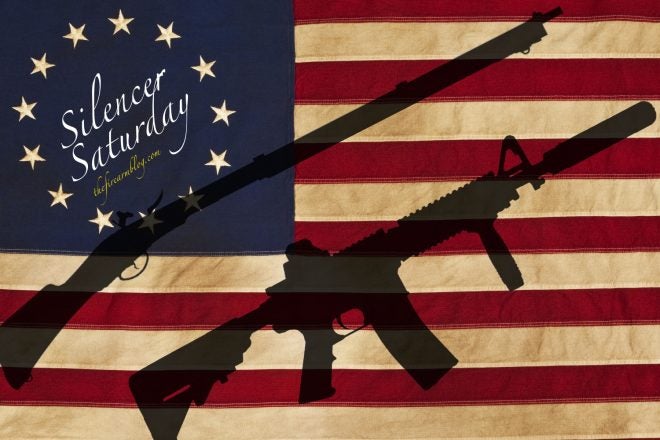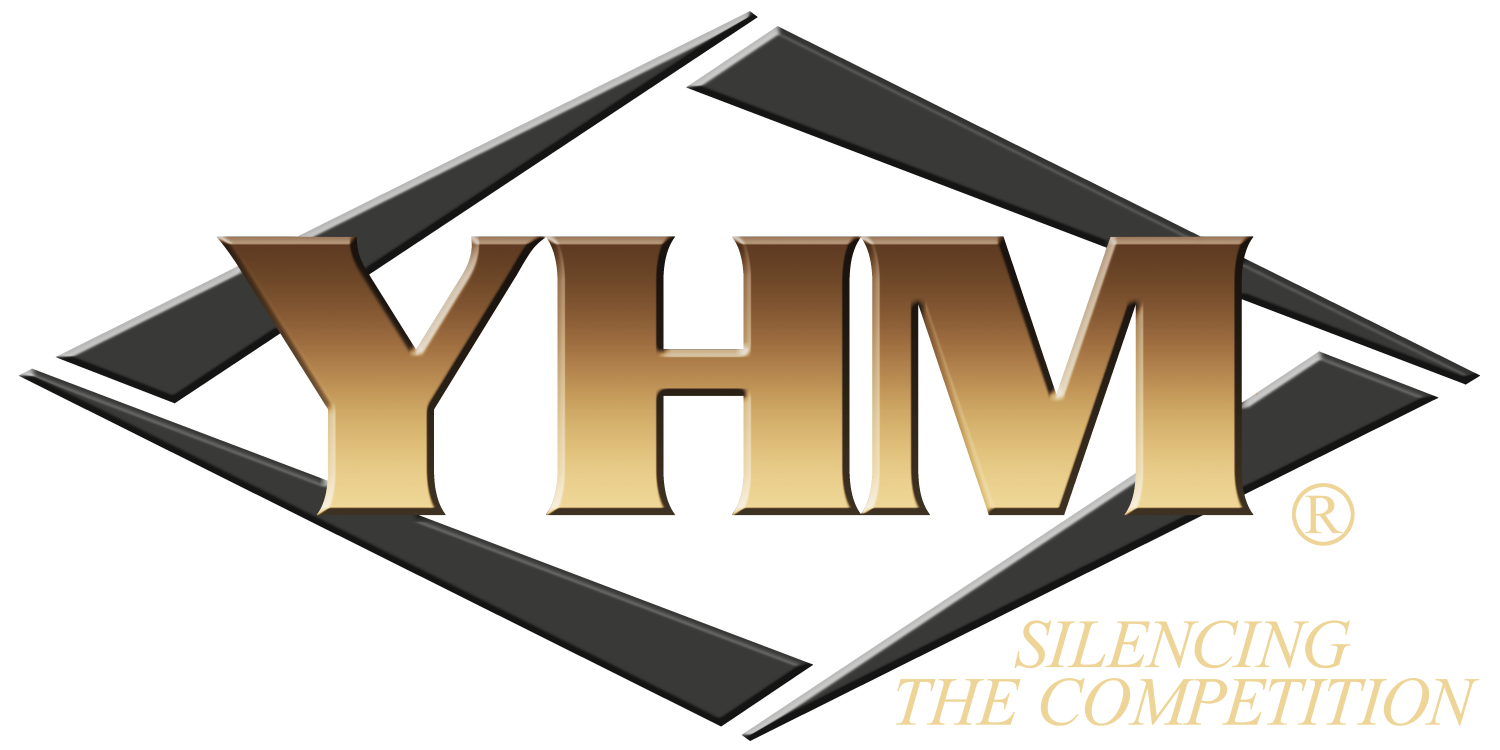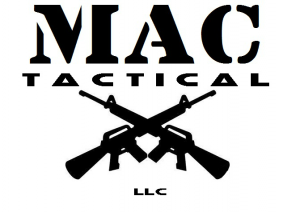Good afternoon everyone and welcome back to TFB’s Silencer Saturday sponsored by Yankee Hill Machine. Nearly two feet of snow has kept me from getting out to the range and filming, meaning that our look at the KNS adjustable gas piston for the IWI Galil ACE in 7.62x39mm and subsequent testing has to wait another week. In the meantime, between the ATF Firearms In Commerce Report released a few months ago and the NSSF’s report on Firearms Production Figures this week, I wondered what more we can do to increase the number of suppressors in common use in the United States. And while there isn’t one solution that will boost silencer ownership overnight, there may be something the firearms industry can do, that won’t cost any money and may nudge buyers in the right direction.
SILENCER SATURDAY #102: Nearly 2M Suppressors In Common Use?
The actual number of silencers register in the U.S. is 1.75M according to the official 2018 numbers. Although it sounds like a lot, it does include government and agency owned cans (unfortunately we don’t have a breakdown of those numbers). Even so, in comparison to the reported 417 million firearms and 8 billion rounds of ammunition in civilian hands, a measly two million suppressors is basically a rounding error. However, a better metric would be a comparison of silencers owned and used on a regular basis versus the firearms owned a used on a regular basis. Looks like it’s time to put together another Silencer Saturday survey.
But the real question remains – are silencers (suppressors for those of you who prefer the functional name over the legal name) firearms that are now in common use by shooters in the United States? First we should take a look at a possible definition of common use as it pertains to NFA firearms.
One of the Second Amendment cases that the Court has heard, and until recently the only case challenging a congressional enactment, seemed to affirm individual protection but only in the context of the maintenance of a militia or other such public force. In United States v. Miller, the Court sustained a statute requiring registration under the National Firearms Act of sawed-off shotguns. After reciting the original provisions of the Constitution dealing with the militia, the Court observed that “[w]ith obvious purpose to assure the continuation and render possible the effectiveness of such forces the declaration and guarantee of the Second Amendment were made. It must be interpreted with that end in view.” The significance of the militia, the Court continued, was that it was composed of “civilians primarily, soldiers on occasion.” It was upon this force that the states could rely for defense and securing of the laws, on a force that “comprised all males physically capable of acting in concert for the common defense,” who, “when called for service . . . were expected to appear bearing arms supplied by themselves and of the kind in common use at the time.” Therefore, “[i]n the absence of any evidence tending to show that possession or use of a ‘shotgun having a barrel of less than 18 inches in length’ at this time has some reasonable relationship to the preservation or efficiency of a well-regulated militia, we cannot say that the Second Amendment guarantees the right to keep and bear such an instrument. Certainly it is not within judicial notice that this weapon is any part of the ordinary military equipment or that its use could contribute to the common defense.” – Cornell Law LII
To boil the above argument down, the court seems to conclude that since a short barreled shotgun wasn’t a firearm in common use by those who comprised the militia at the time, that it wasn’t necessarily protected by the second amendment to the U.S. Constitution. But then the Heller case came along in 2008, which clarified the Second Amendment as being an individual right to own firearms.
It was not until 2008 that the Supreme Court definitively came down on the side of an “individual rights” theory. Relying on new scholarship regarding the origins of the Amendment, the Court in District of Columbia v. Heller confirmed what had been a growing consensus of legal scholars—that the rights of the Second Amendment adhered to individuals. The Court reached this conclusion after a textual analysis of the Amendment, an examination of the historical use of prefatory phrases in statutes, and a detailed exploration of the 18th century meaning of phrases found in the Amendment. Although accepting that the historical and contemporaneous use of the phrase “keep and bear Arms” often arose in connection with military activities, the Court noted that its use was not limited to those contexts. Further, the Court found that the phrase “well regulated Militia” referred not to formally organized state or federal militias, but to the pool of “able-bodied men” who were available for conscription. Finally, the Court reviewed contemporaneous state constitutions, post-enactment commentary, and subsequent case law to conclude that the purpose of the right to keep and bear arms extended beyond the context of militia service to include self-defense.
Using this “individual rights theory,” the Court struck down a District of Columbia law that banned virtually all handguns, and required that any other type of firearm in a home be dissembled or bound by a trigger lock at all times. The Court rejected the argument that handguns could be banned as long as other guns (such as long-guns) were available, noting that, for a variety of reasons, handguns are the “most popular weapon chosen by Americans for self-defense in the home.” Similarly, the requirement that all firearms be rendered inoperable at all times was found to limit the “core lawful purpose of self-defense.” However, the Court specifically stated (albeit in dicta) that the Second Amendment did not limit prohibitions on the possession of firearms by felons and the mentally ill, penalties for carrying firearms in schools and government buildings, or laws regulating the sales of guns. The Court also noted that there was a historical tradition of prohibiting the carrying of “dangerous and unusual weapons” that would not be affected by its decision. The Court, however, declined to establish the standard by which future gun regulations would be evaluated. And, more importantly, because the District of Columbia is a federal enclave, the Court did not have occasion to address whether it would reconsider its prior decisions that the Second Amendment does not apply to the states. Cornell Law LII
Also note that the court reiterated that “dangerous and unusual weapons” could still be prohibited. Some judges would probably classify silencers as “dangerous and unusual” even though the argument could be made that they aren’t weapons of any kind.
A modern day example of ‘in common use’ would most likely start with ownership statistics. A quick look shows that the number of silencers owned in the United States increased by nearly 1.4M in just six years (2012-2018). The dramatic rise in popularity (ownership) in a short amount of time is a good sign, but doesn’t necessarily point to suppressors being “in common use”.
A few months ago, our own Luke C. completed a deep dive into the ATF’s 2019 Firearms Commerce Report. If you haven’t had the chance to give it a read, it’s worth your time.
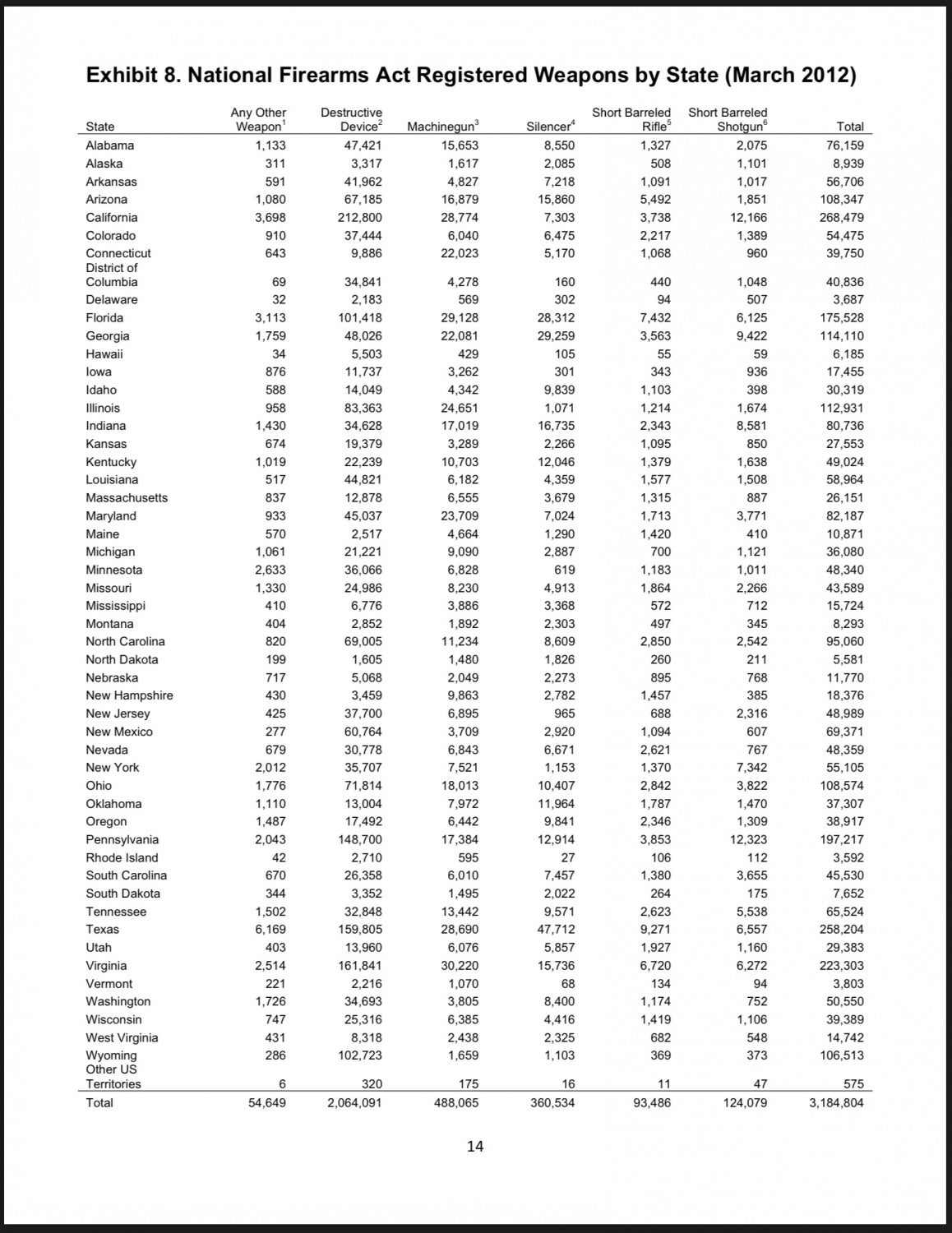
SILENCER SATURDAY #102: Nearly 2M Suppressors In Common Use? 2012 ATF Firearms in Commerce
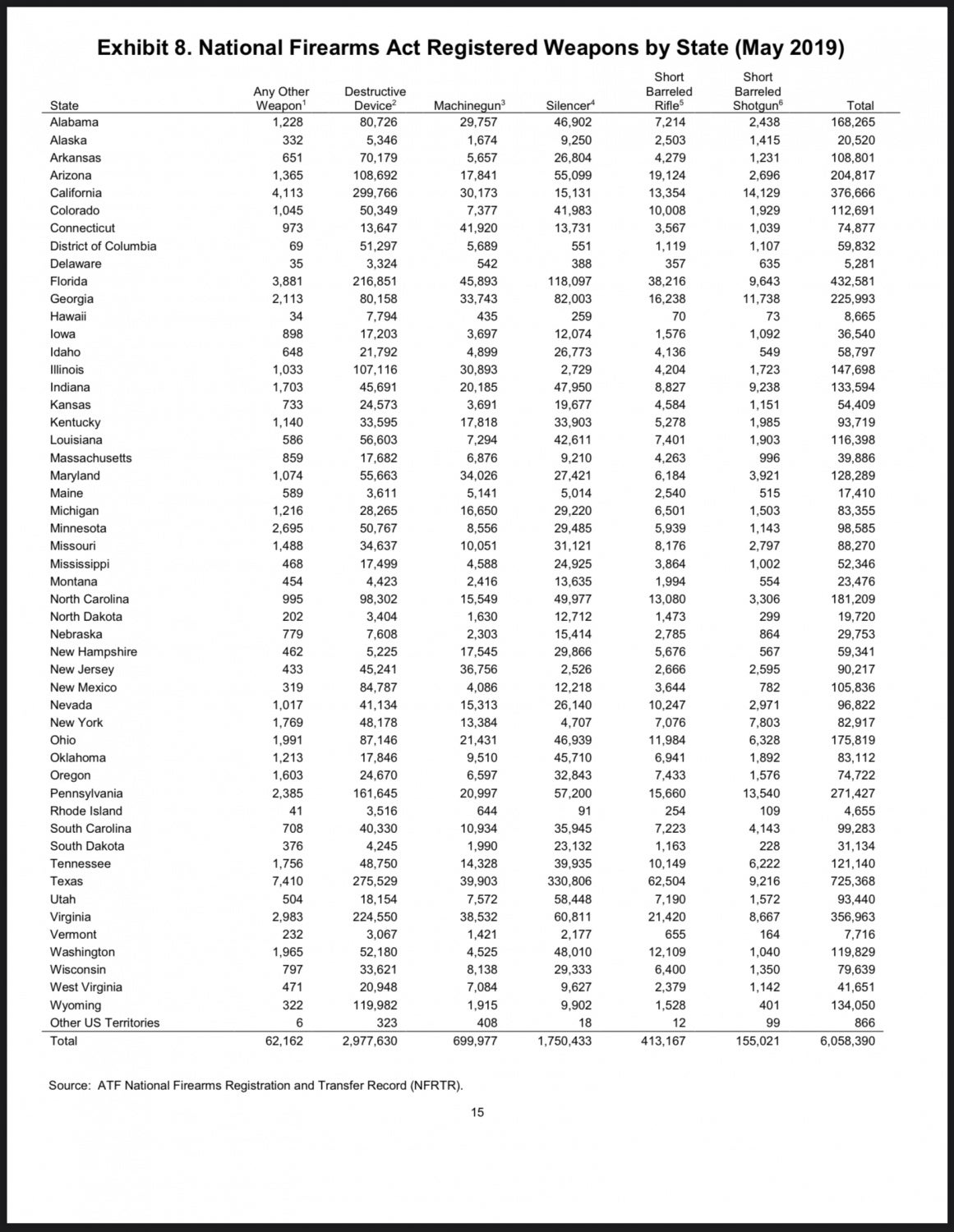
SILENCER SATURDAY #102: Nearly 2M Suppressors In Common Use? 2018 ATF Firearms In Commerce
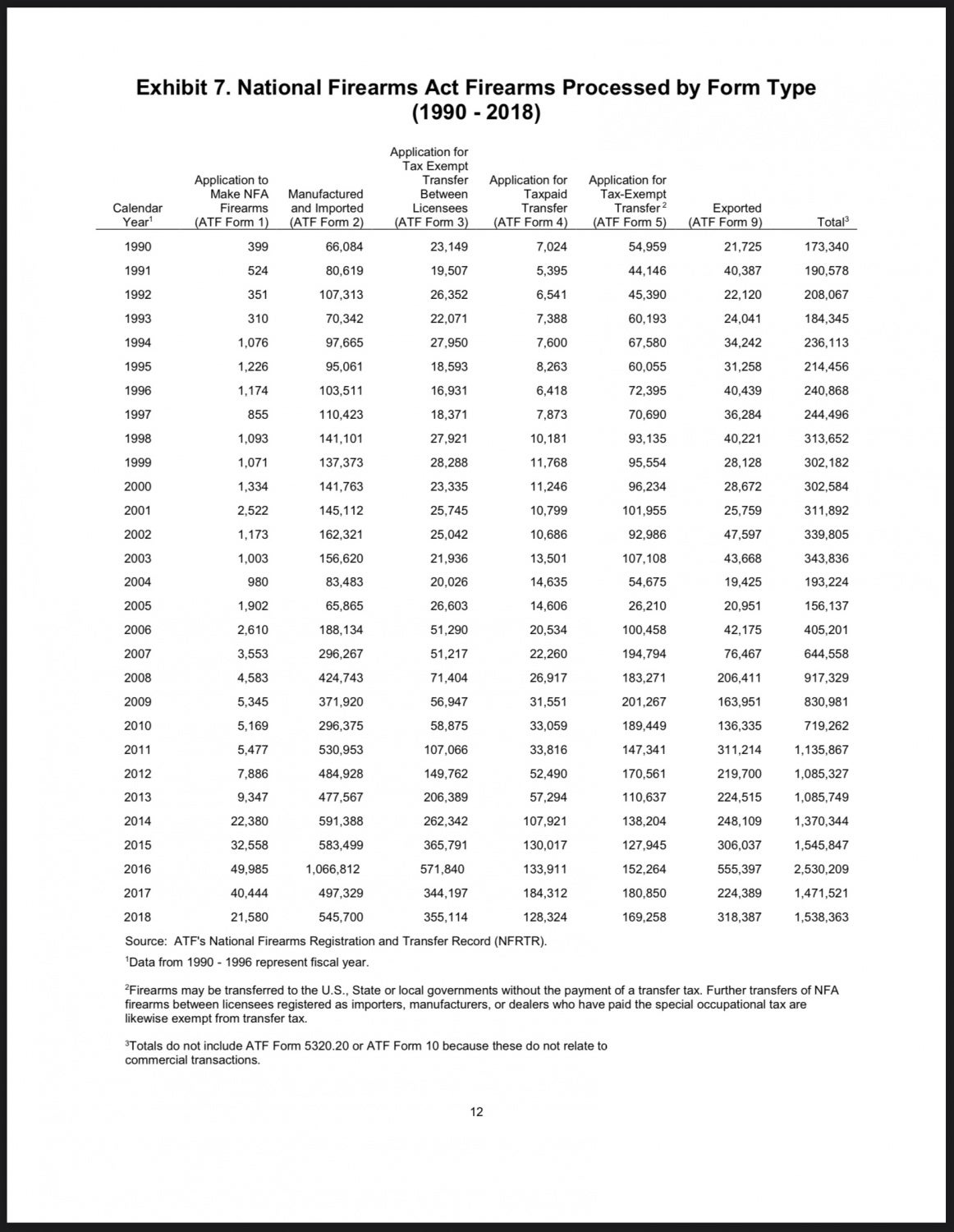
SILENCER SATURDAY #102: Nearly 2M Suppressors In Common Use? – 2018 ATF Firearms In Commerce
However, if 17.7M “modern sporting rifles” in civilian hands is enough for some to start considering these firearms as being in common use, surely 10% of that number – 1.75M – for firearms that are highly regulated, taxed and controlled would push them towards more “common use” items.
NSSF RELEASES FIREARMS PRODUCTION FIGURES
https://www.nssf.org/nssf-releases-firearms-production-figures/
More than 17.7 million Modern Sporting Rifles in legal Ownership
DECEMBER 4, 2019.
WASHINGTON, D.C. — The National Shooting Sports Foundation® (NSSF®), the firearms industry trade association, released the latest Firearms Production Report to members. The report compiles the most up to date information based on data sourced from the Bureau of Alcohol, Tobacco, Firearms and Explosives’ (ATF’s) Annual Firearms Manufacturing and Export Reports (AFMER). Key findings for public release showed:
- The estimated total number of firearms in civilian possession is 423 million, according to data reported in the ATF’s Firearms Commerce Report in the United States 2019 report and including the preliminary 2018 Annual Firearms Manufacturing and Exportation Report (AFMER) figures and industry estimates.
- Approximately 17.7 million Modern Sporting Rifles were produced in the US or imported between 1990-2017.
- Approximately half of all rifles produced in 2017 were modern sporting rifles.
- In 2017, 7,901,218 total firearms were produced in the U.S. Of those, 4,411,923 were pistols and revolvers, 2,821,945 were rifles and 667,350 were shotguns.
- An interim 2018 estimate showed a total 7,660,772 total firearms were produced in the U.S. Of those 4,277,971 were pistols and revolvers, 2,846,757 were rifles and 535,994 were shotguns. Those are interim reports and will be updated as complete information becomes available.
- Firearms-ammunition manufacturing accounted for nearly 12,000 employees producing over $4.1 billion in goods shipped in 2017. An estimated 8.7 billion rounds, of all calibers and gauges, were produced in 2018 for the U.S. market.
“These figures show the industry that America has a strong desire to continue to purchase firearms for lawful purposes,” said Joe Bartozzi, President of the National Shooting Sports Foundation. “The Modern Sporting Rifle continues to be the most popular centerfire rifle sold in America today and is clearly a commonly-owned firearm with more than 17 million in legal ownership today. The continued popularity of handguns demonstrates a strong interest by Americans to protect themselves and their homes, and to participate in the recreational shooting sports.”
The report also shows that as lawful firearms ownership in America continues to grow, criminal and unintentional misuse of firearms is falling. During the 25-year period covered in this report (1993–2017) the violent crime rate has decreased by 48.6 percent and unintentional firearm-related fatalities have declined by 68 percent.
Proposal: Firearms Manufacturers Advocate For Silencer Use
By now, regular Silencer Saturday readers should already know some of the benefits of adding a suppressor to a firearm: preventing hearing damage and reducing noise pollution. Maybe if firearms manufacturers would use the owner’s manual that must to be provided with each new firearm to advocate for the use of a suppressor. Something like this:
WARNING: Shooting a firearm can cause permanent hearing damage after just one shot. Always wear proper hearing protection. If your firearm is equipped with a threaded barrel, consider using a suitable firearm suppressor to further protect your hearing. Follow all local, state and federal laws.
I know, no one reads the manual, but adding silencer-specific language to the official documentation that comes with each firearm could normalize their use and spur new ownership.
Thanks for reading Silencer Saturday. Be safe, have fun and we’ll see you back here next week.
The following individuals have not replied to my emails regarding their prizes for the Silencer Saturday 100 contest. If I don’t hear from you by tomorrow, I’ll have to pick new winners.
1) Micheal N. – s****777@hotmail.com
YHM Turbo K2 – https://yhm.net/turbor-k-5-56-stainless-with-1-2-28-q-d-flash-hider.html
2) Richard P. – rp********@arlingtonva.us
SIG SRD762 – https://www.sigsauer.com/store/srd762.html
3) Shannon T. – shannon@pond*************.com
Dead Air Mask – https://deadairsilencers.com/products/mask/
4) Luis S. – ls****@cox.net
Silencer Shop Swag Pack – https://www.silencershop.com/
Silencer Saturday is Sponsored by Yankee Hill Machine:
Buy YHM silencers and accessories at:
Silencer Shop – Hansohn BrOthers – dead eye gun supply –
Mac tactical
All YHM Products At Brownells
DEALERS: If you want your link to buy YHM suppressors included in future Silencer Saturday posts, email: silencers@thefirearmblog.com
 Your Privacy Choices
Your Privacy Choices
